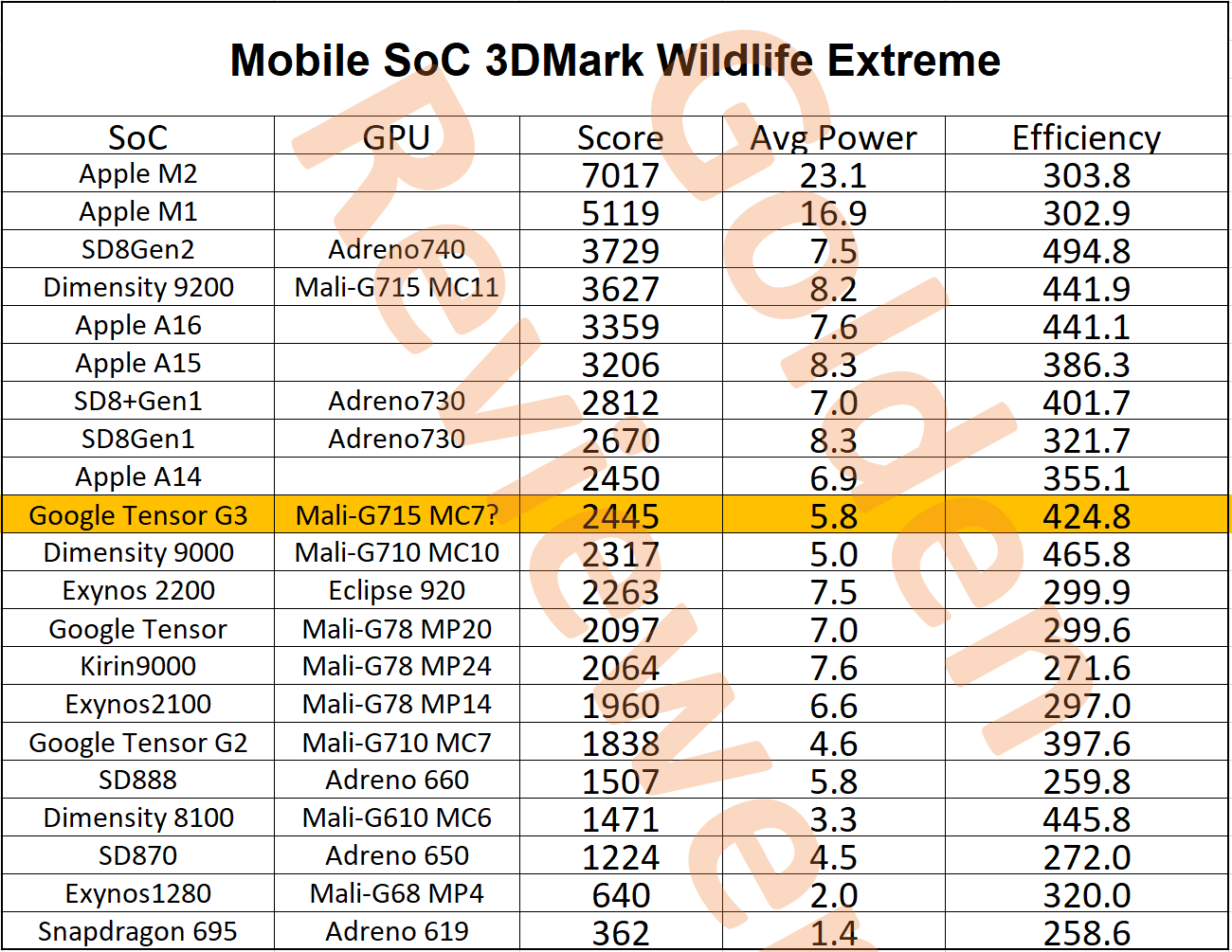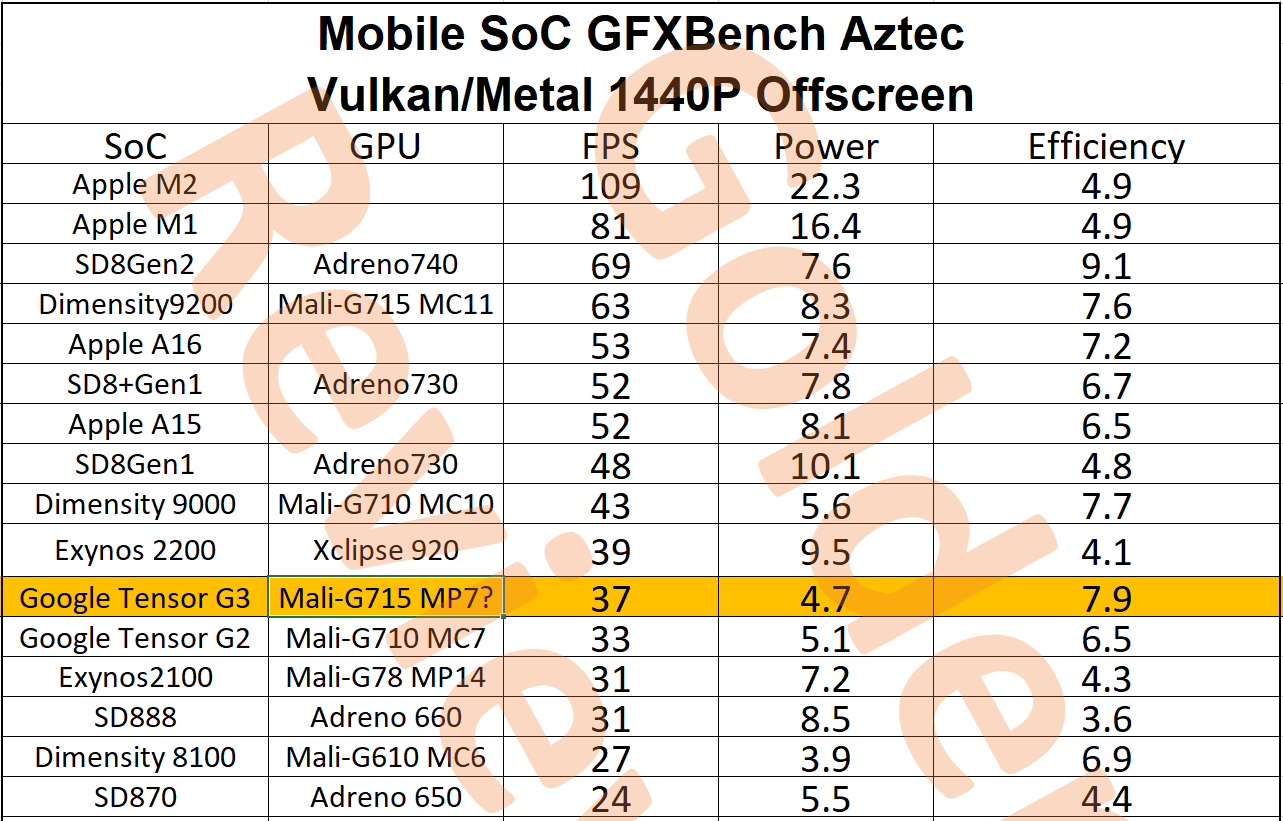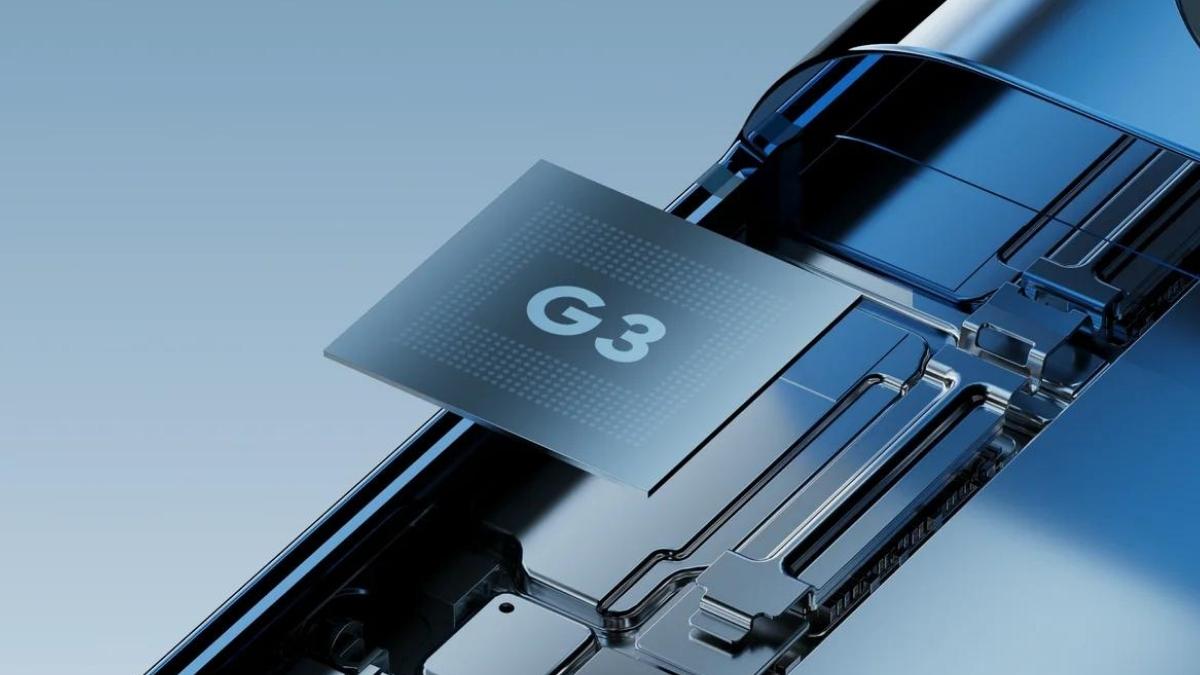The Google Tensor G3 aims to improve some of the criticisms of the Tensor G2. The Tensor G2 has two Cortex-X1 for performance at 2.85 GHz, two mid-performance Cortex-A78 cores at 2.35 GHz, and four small efficiency cores, the Cortex-A55 cores at 1.8 GHz. This was not a very notable upgrade from the first Google Tensor since the system cache levels didn’t change. The TPU is better, but the GPU was heavily improved, with a high clock speed.
However, the Tensor G2 chip has many issues. It’s built on Samsung’s 5nm fabrication technology, which has problems with the yield rate. Due to a poor yield rate, the chips also suffer from a lack of coherence between units. There are throttling issues where the phone reduces the performance to reduce the heat. Regardless, Pixels with the Tensor G2 heat a lot with intensive tasks, despite the inclusion of Graphite layers to try and cool the phone down.
The Tensor G3 features a 9-core CPU, which departs from the traditional 8-core layout on SOCs. It uses Samsung’s 4nm (4LPP) node, which isn’t the best the industry offers. While the yield rate is supposedly better, the chip is still not as efficient as chips from the competition. It also misses out considerably on performance. The performance is a step up from the Tensor G2, but nothing remarkable.
Performance of the Tensor G3
The 9-core Tensor G3 features 1 prime (peak performance) Cortex-X3 core at 2.91 GHz, 4 Cortex-A715 mid-performance cores at 2.37 GHz, and finally, four efficient cores or small cores, Cortex-A510 at 1.7 GHz. This CPU layout is better than the Tensor G2 and finally brings in some much-needed improvements to efficiency. The 890 MHz GPU is still not beating the A17 Pro or the Snapdragon 8 Gen 2.
The Tensor G2 wasn’t known for efficiency, and many users had issues with battery life. However, the Tensor G3 has some efficiency gains, and the battery life is decent on the Pixel 8 lineup.
The Google Tensor G3 finally breaks 1 Million points on the AnTuTu Benchmark, just behind the flagship Snapdragon 8+ Gen 1 chip from 2022. On Geekbench 6, the phone scores about 1600 to 1700 on the single-core test. It can reach 4500 or 4700 in the multi-core test, which is a respectable score, but it’s still behind most flagships today.
The improvements to performance are not major, and it’s fair to call it weak against other phones. The iPhone 15 Pro scores over 7000 on the multi-core Geekbench test and around 2800 points on the single-core test. The Snapdragon 8 Gen 2 scores over 5000 on the multi-core test and over 1500 on the single-core test. The 8 Gen 2 can also sustain this performance better since it’s built on TSMC’s efficient 4nm node with a much better yield rate.
Performance in 3D Mark Wildlife Extreme
Google didn’t reveal the details of the GPU on the Tensor G3. It’s probably a slightly better Mali-G710 from last year, and they both share 7 compute units. We didn’t get any efficiency figures at the presentation. Still, benchmarks and tests from Golden Reviewer reveal that the Tensor G3 has notable efficiency gains, but it’s not particularly good with performance.

On the 3D Mark Wildlife Extreme test, it does much worse than the competition. It only scores 2445 points while consuming 5.8W of power. The average efficiency rating is 424.8. That’s behind Apple’s A14 Bionic chip with a 5nm fabrication from 2020, and is not particularly good. It’s behind even the Snapdragon 8 Gen 1.
We have another chipset with a similar CPU configuration, the MediaTek Dimensity 9200. It uses the Mali-G715 with 11 compute units but uses a 4nm TSMC node. As expected, the Dimensity 9200 completely outperforms the Tensor G3 due to the much better fabrication. However, the efficiency is nearly equal on both chips. The older Dimensity 9000 chip is still worse than the Tensor G3 and is noticeably more efficient.
GFXBench Aztec Test
We have another test, the GFXBench Aztec, which runs at 1440P. The Dimensity 9200 still scores a lot more than the Tensor G3. The frame rate is nearly double, but the efficiency is worse on the Dimensity. The Tensor G3 is, interestingly, twice as efficient. However, the Tensor G3 isn’t better than the G2 in this test. The Tensor G3 scores only 37FPS on average, with a 4.7W power draw. The efficiency is about 7.9. We still assume that the Tensor G3 uses the Mali-G715 GPU with 7 compute units.

If you run the GFXBench 3.1 test at 1080P, the Tensor G3 scores 155FPS with a 6.9W power draw, with an average FPS per watt of 22.5. It’s still behind the 9200, but not as much as in the 1440P test. The power consumption is about the same.
Tying these results together, we can conclude that the Tensor G3 brings noticeable improvements to efficiency. It will contribute to the battery life of the Pixel 8 lineup positively. To reduce the heat, Google is severely dropping the CPU performance, and they’re also using thick layers of Copper and Graphite internally to reduce the heat. This solves the heating issues but does not address the root cause.
The 4nm Samsung node is clearly a disadvantage and is still some generations behind the 4nm TSMC node. This doesn’t make the Exynos 2400 very promising, but the difference in architectural design might save it.
